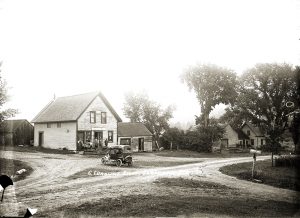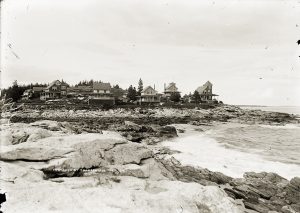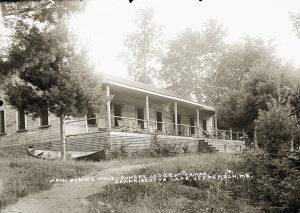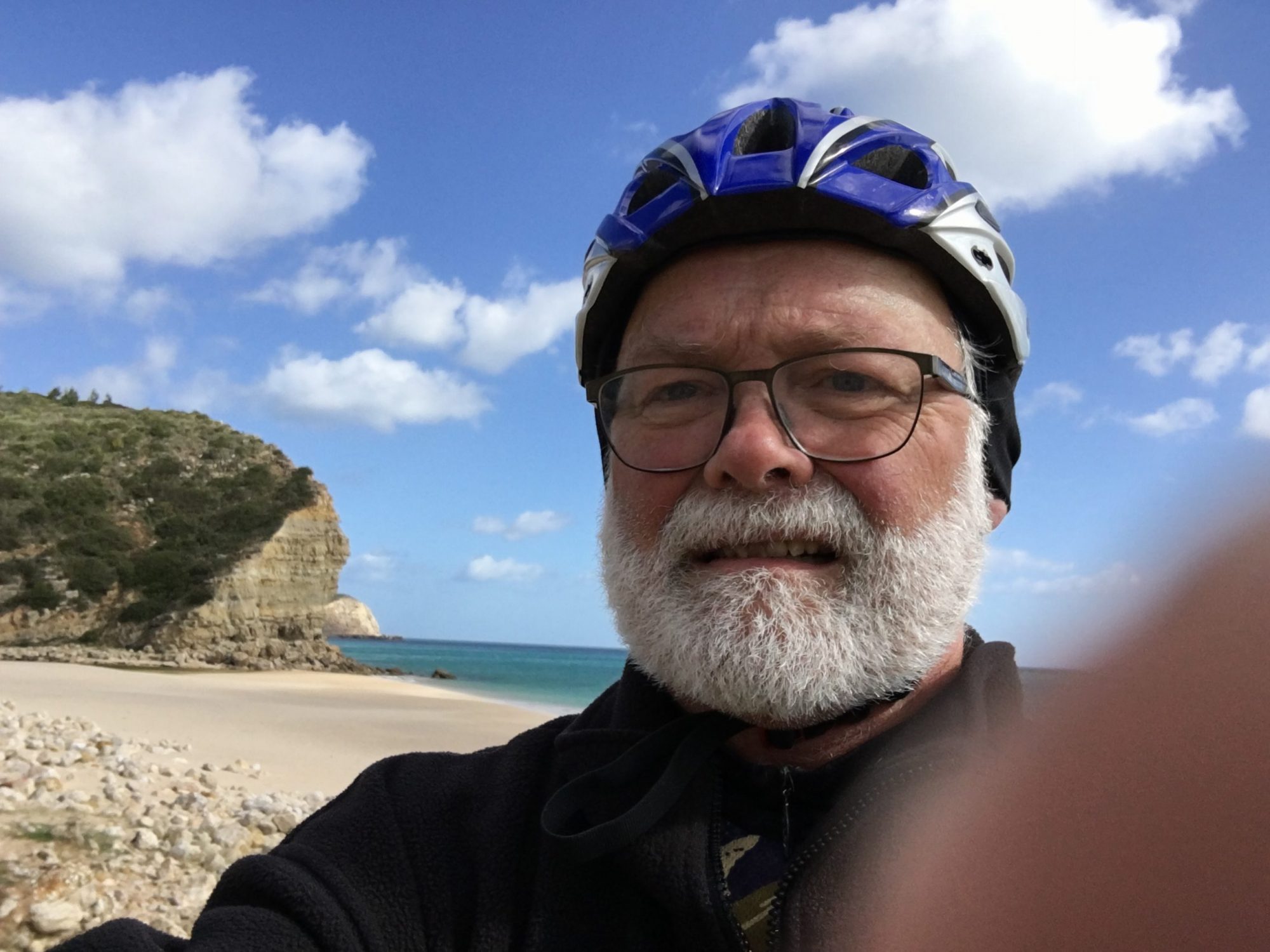We’d like just one or two captions, and each must be no more than 200 words. Below I’ve copied three captions for photos from other Lincoln County communities and attached the photos that go with them. Consider them examples of what we’re looking for–a little context, reference to what/where/when/and maybe even who’s in the photo, maybe a brief anecdote, not too much detail.

*102487
C.F. Brown’s Store, Somerville, Me. ??
Several men and a boy stand on the steps of Brown’s General Store at Somerville Corners, later called as Brown’s Corners. The Brown Store sold everything: grains and feed, cordwood and lumber, food and clothing, and, of course, candy. The second floor had once been used to raise chickens, a fact discovered when the space was being remodeled as a dance floor. Charles F. Brown ran the store until his death in 1928, when his stepson Herklas took over its operation.
Charles Brown was the proprietor in this photo, when cars shared the road with older forms of transport. A horse’s head and buggy wheels are barely visible between the auto and the store. The store did not yet have gas pumps, but later Herklas Brown sold Esso gasoline. He attracted the attention of Gordon Parks, an eminent photojournalist of the time, who chronicled American life of the 1940s for Standard Oil. Parks’ photos of the Brown family provide an intimate portrait of life in Somerville.
When the store closed in 1962, the center of the community went with it. Today Somerville has no stores, the Sheepscot River powers no mills, and Somerville Corners is merely a sleepy rural intersection.

*104853.
Cottages at Chamberlain, Me. 52.
Long Cove Point began to be developed as a summer colony in the 1890s when 64 lots were laid out; they sold for $10 to $25 each. About 16 cottages and a post office, named for Henry Chamberlain of Round Pond, had been built by 1906. In the early 1920s development of the cove accelerated when four men purchased the Hackleton farm and marketed the property as “The Land of Treasured Vacations.” Many cottages were built in the 1920s and 1930s.
In 1910 a clubhouse, first lighted with oil lamps and Japanese lanterns, was ready for use. Within the next few years a bowling alley and kitchen were added, and then clay tennis courts. Indoor plumbing was installed about 1950. In the summer the club was a busy place, with whist and bridge parties, covered dish suppers, dances, croquet, clambakes, movies and other activities.
Electricity reached Long Point Cove in 1925, and a few years later a wharf, now gone, was built on the south side of the point. The cottages in the photo are still there.

*107222
Main Dining Hall, Sunset Lodge and Camps, Damariscotta Lake, Jefferson, ME. 4.
For many years Sunset Lodge was a favorite destination for lawyers, doctors and other vacationers from New York, Pennsylvania and other states. In 1928 Chandler and Helen Stetson purchased the lodge and six cottages from J. Edwin Morrissette. They gradually expanded the business to include an enlarged lodge and 24 rustic hemlock slab-sided cabins facing the lake. The extensive waterfront had a sandy swimming area and fleet of traditional green canvas-covered fishing boats and canoes for guests. Many local people worked as cooks, guides, waitresses, and housekeeping staff.
Each year Chan went to the Boston and New York Sportsman’s Shows to promote the business, taking a miniature diorama he’d made of the resort. His wife sewed new bedspreads and curtains for several cabins each year. Guests returned year after year for the good fishing, relaxed atmosphere, home-made meals, and reunions with friends. Weekly meal specials often included a lobster bake or a steak cookout. Telling “yarns” in front of the fireplace, sing-a-longs and home movies were frequent evening activities.
Chan died in 1961, and his son Robert and his wife Aileen continued the business until Bob’s death in 1974. Today’s Sunset Cabins rents some of the cottages.
